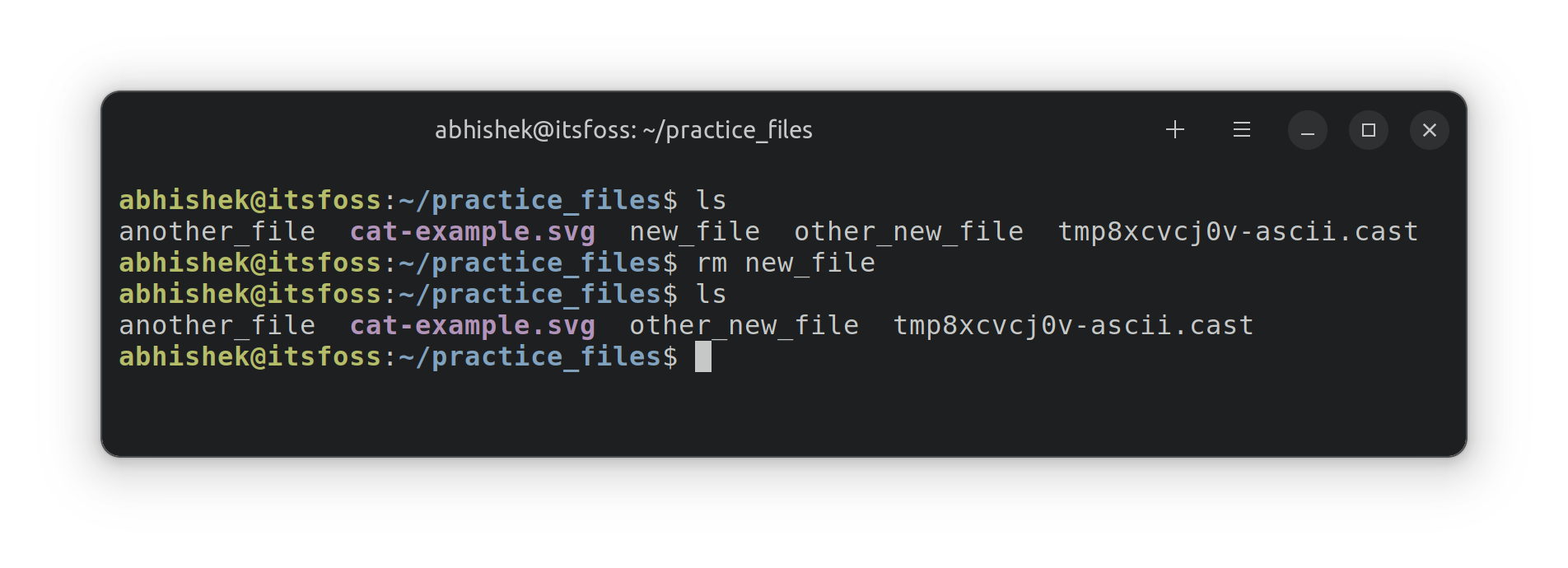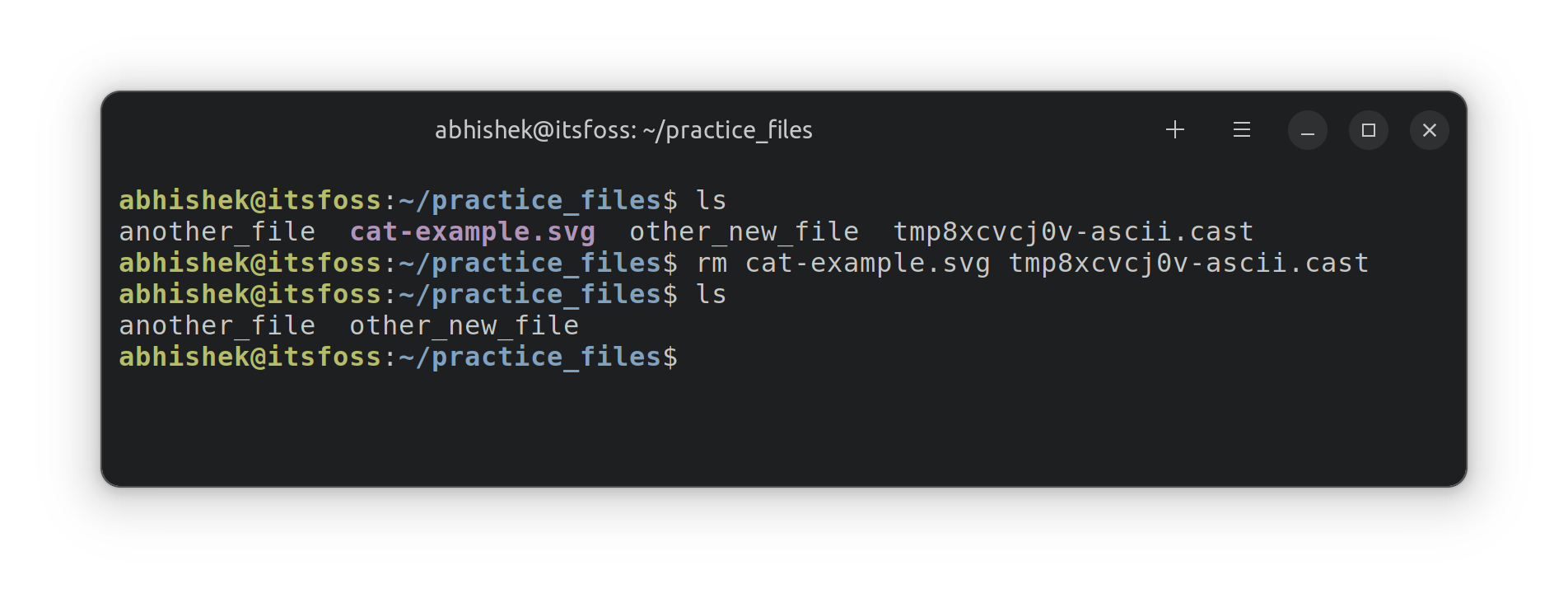In the earlier chapters of the Terminal Basics series, you learned to create new files and directories (folders).
Let's now see how you can delete files and folders in the Linux terminal.
Deleting files
To remove files, you can use the rm command in the following fashion:
rm filename_or_pathYou won't see any output if the file is successfully deleted.
Here's an example where I removed one of the files named new_file. When I list the directory contents, you can see that new_file no longer exists.

You can also remove multiple files in the same command:
rm file1 file2 file3Let me show an example of deleting two files in a single command.

🏋️ Exercise file deletion
Let's practice what you just learned. Create a directory named practice_delete and switch to it:
mkdir practice_delete && cd practice_deleteNow create a few empty files:
touch file1 file2 file3Delete the file3:
rm file3Now, let's do something extra. Run this command and change the permission on file2:
chmod u-w file1 file2Try deleting file2 now:
rm file2Do you see a message 'remove write protected file'? That's because you removed the write permission (for modification) from this file.
You can press Y or enter key to confirm the deletion or N to deny the removal.
If you don't want to see this message and still delete it, you can use the force delete option -f. Try it by deleting file1:
rm -f file1Here's a replay of all the above examples to help you:

Remove but with caution
The lack of trash bin makes the deletion a permanent jobs of sort. This is why you should be careful about what files are you deleting.
There is an interactive mode with option -i. With this, you'll be asked to confirm the deletion.
rm -i filenameThis is helpful when you are deleting several files based on a certain pattern.
Here's an example where I am interactively deleting all the files that match file_ pattern in their name. I delete some and keep some in the interactive mode.

Deleting directories
There is a dedicated rmdir command to remove directories in Linux.
rmdir dir_nameHowever, it can only delete empty directories. If the directory has any files or subdirectories in it, the rmdir command will throw error.
abhishek@itsfoss:~/practice_delete$ rmdir dir2
rmdir: failed to remove 'dir2': Directory not emptyAnd that makes it less useful in most cases.
So, how do you delete a non-empty folder then? Well, you use the same rm command that you used earlier for removing files.
Yes, the same rm command but with the recursive option -r:
rm -r dir_name🏋️ Exercise folder deletion
Let's practice what you learned.
Switch to practice_delete folder if you are not already there. Now, create two directories dir1 and dir2.
mkdir dir1 dir2Create a file in dir2:
touch dir2/fileNow try deleting the directories using the rmdir command:
rmdir dir1rmdir dir2Since the dir2 is not empty, rmdir command will fail. Instead, use the rm command with recursive option:
rm -r dir2Here's a replay of all the above command examples to help you out:

rm-ri dir_nameSo, you learned to delete files and folders both using Linux commands. It's time to practice some more.
📝 Test your knowledge
Prepare a directory tree that looks like this:
.
├── dir1
│ ├── file1
│ ├── file2
│ └── file3
├── dir2
├── dir3
└── file
Basically, you create a file named file and three directories dir1, dir2 and dir3 in the current directory (practice_delete). And then you create files file1, file2 and file3 in dir1.
Now do the following:
- Delete
file2. - Switch to the
dir3and force delete the file namedfilein the upper directory. - Delete all the contents of dir1 but not the directory itself.
- List the contents of the
dir.
I encourage you to discuss the practice questions in the It's FOSS community forum.
This is going good. You have learned several basic things like switching directories, checking the contents of a directory, and creating and deleting files and directories.
In the next chapter, you'll learn about copying files and folders in the terminal. Stay tuned!

